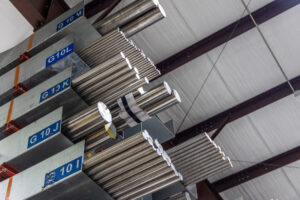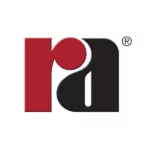Rolled Alloys Metallurgical Services often receive questions about welding duplex stainless steel and general rules to follow to maintain corrosion resistance and properly preserve mechanical properties.
This article will discuss basic rules and guidelines to help minimize potential issues that may arise when welding duplex stainless steel. For in-depth details such as shielding gases, amperage, voltage, and other parameters, please consult the welding manuals for Zeron® 100, 2205, and LDX 2101®.
Links for each grade's data sheet are found below:
Filler Metal
When welding, it is common practice to utilize a matching filler metal to that of the base material. Below is a table that shows the matching filler metal for various duplex grades.
Base Material Filler Metal
Zeron® 100 Zeron® 100X
2507 ER2594
2205 2209
LDX 2101® LDX 2101®
These filler metals are nearly identical in chemistry to their matching base metal, except for an additional 1.5 to 3% nickel, depending on the alloy. The higher nickel content aids in forming the 50/50 mix of austenite and ferrite phases. The benefit of these over-alloyed fillers is that there is no need for post-weld heat treatment. Additionally, it is common to see fabricators deviate from published matching filler metals due to either availability or additional corrosion resistance. For example, LDX 2101® is often welded with 2209 filler metal because it is more readily available. Also, higher nickel, chromium, and molybdenum filler metals increase corrosion resistance. To assist in weld wire selection for dissimilar metal welding,
Rolled Alloys provides a weld wire selector to assist with wires selection which can be accessed via the link below:
Weld Wire Selector
When dealing with specialty alloys, there can be unique welding combinations where guidance is not easily found. Let us help you take guesswork out of the equation.
Heat Input and Interpass Temperatures
By far, the most common error seen when welding duplex stainless steel is utilizing an improper heat input and interpass temperature. Duplex stainless steels require relatively high heat input and low interpass temperatures when welding to obtain the proper phase balance in the weld metal. Insufficient time at temperature can result in high ferrite and insufficient austenite. Conversely too much time at temperature can result in high austenite, an increased chance of forming nitrides and sigma phase in the base metal. These changes will decrease the corrosion resistance and toughness.
Quality Checks
It is essential to perform quality checks after welding to ensure proper phase balance. Therefore, when developing a welding procedure, it is critical to test corrosion resistance, impact toughness, and ferrite/austenite mix in the weld qualification to ensure that the final production weld yields good results and is fit for service. Often it is unfeasible to test a production weld thoroughly. As this is the case, it is common to utilize a ferritscope to test the ferrite content of a production weld to roughly determine any weld-related problems. Typically, incorrect ferrite levels will be the first indication of a problem. If a problem is found, further testing should be performed. The ferritiscope is not a substitute for the more accurate microscopic methods. Rather it is meant only as a QC check. If there are inconsistencies, a destructive test and a microscopic investigation may be necessary.

Trade Shows
Come talk to a Rolled Alloys representative in person about your project. You can find us at these trade shows.

March Mania 2025
Every Online Order in March is a Chance to Win One of 8 Great Prizes!

Instant Pricing on Nickel, Stainless Steel, Duplex, and Titanium
Get real-time pricing and availability for nickel, stainless steel, duplex, and titanium—all in one place.

New and Expanded Stock for 2025
New Titanium, Stainless, Nickel and Cobalt in Stock Now – CP Ti Grade 2, 635, 718 and More!

History and Uses of Alloy 800
Discover the evolution of Alloy 800, from its origins during the 1950s to modern derivatives like Alloy 800H/800HT. Learn about its high-temperature strength, petrochemical applications, and commercial availability today.

New Bar Stock Available
New Round and Flat Bar Products in Stock at Rolled Alloys



